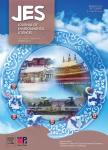Risk assessment for the daily intake of polycyclic aromatic hydrocarbons from the ingestion of cockle (Anadara granosa) and exposure to contaminated water and sediments along the west coast of Peninsular Malaysia
Risk assessment for the daily intake of polycyclic aromatic hydrocarbons from the ingestion of cockle (Anadara granosa) and exposure to contaminated water and sediments along the west coast of Peninsular Malaysia作者机构:Centre of Excellence for Environmental ForensicsFaculty of Environmental StudiesUniversity Putra Malaysia43400 UPMSerdangSelangorMalaysia Faculty of ScienceDepartment of BiologyUniversity Putra Malaysia43400 UPMSerdangSelangorMalaysia
出 版 物:《Journal of Environmental Sciences》 (环境科学学报(英文版))
年 卷 期:2011年第23卷第2期
页 面:336-345页
核心收录:
学科分类:0830[工学-环境科学与工程(可授工学、理学、农学学位)] 07[理学] 0713[理学-生态学]
基 金:supported by the MOSTI Science Funding Project(No. 5450100)
主 题:toxicity assessment carcinogenic polycyclic aromatic hydrocarbons group B2 of US EPA Anadara granosa
摘 要:The concentration of carcinogenic polycyclic aromatic hydrocarbons (c-PAHs) present in the sediment and water of Peninsular Malaysia as well as in the cockle Anadara granosa was investigated. Samples were extracted and analysed with gas chromatographymass spectrometry. The concentrations of total carcinogenic polycyclic aromatic hydrocarbons (t-PAHs) were measured between 0.80±0.04 to 162.96 ±14.74 ng/g wet weight (ww) in sediment, between 21.85± 2.18 to 76.2± 10.82 ng/L in water samples and between 3.34 ±0.77 to 46.85 ± 5.50 ng/g ww in the cockle tissue. The risk assessment of probable human carcinogens in the Group B2 PAHs was calculated and assessed in accordance with the standards of the United States Environmental Protection Agency (US EPA). Case I in the toxicity assessment analysed the cancer risk to consumers of Malaysian blood cockle. Case II assessed the risk of cancer from exposure to PAHs from multiple pathways. The average cancer risk of case I and case II were found to be classifiable as unsafe according to the US EPA standard. The cancer risk due to c-PAHs acquired by the ingestion of blood cockle was (8.82 ± 0.54) × 10^ 6 to (2.67 ± 0.06) × 10^-2, higher than the US EPA risk management criterion. The non-cancer risks associated with multiple pathways in Kuala Gula, Kuala Juru and Kuala Perlis were higher than the US EPA safe level, but the non-cancer risk for eating blood cockle was below the level of US EPA concern.



